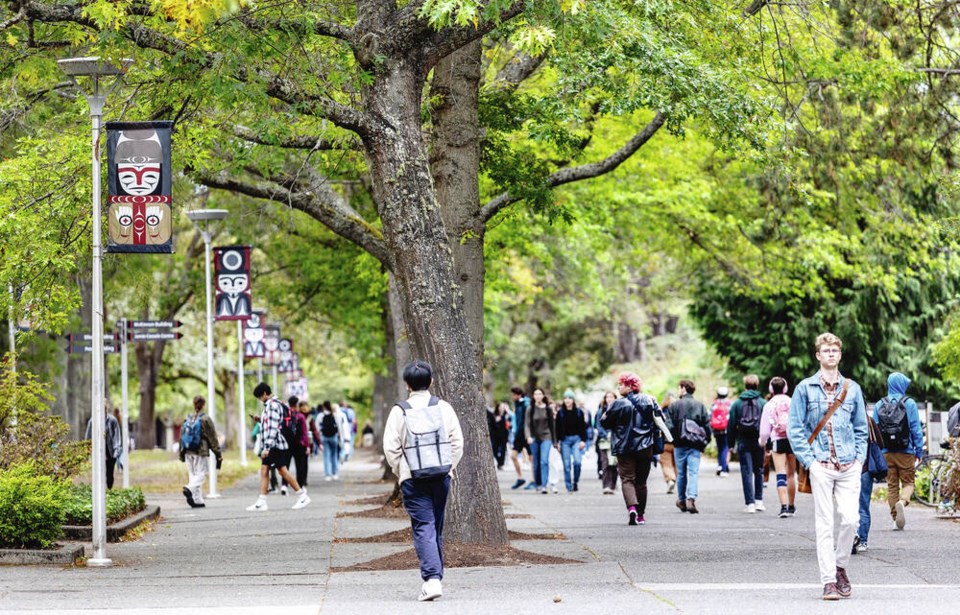Technological Advancements in Education: The AI Revolution
Author: Michael John Lo

In an era defined by rapid technological evolution, artificial intelligence (AI) is no longer a distant dream of futurists. Instead, it has become an integral component across various sectors, most notably in education. As schools and universities seek innovative ways to enhance learning experiences, AI presents new opportunities and challenges.
The University of Victoria (UVic) has recently announced a pioneering initiative aimed at integrating AI into the classroom. Starting this fall, the university’s learning and teaching innovation department will pilot a generative AI writing tutor in three lower-level undergraduate courses. This move is part of a broader trend where educational institutions are beginning to recognize and harness the transformative power of AI.

The University of Victoria will trial an AI writing tutor to enhance student learning.
The generative AI writing tutor is designed to provide personalized feedback and support to students, helping them develop their writing skills. By analyzing students' writing in real-time, the AI can offer suggestions, highlight areas for improvement, and provide writing tips tailored to each individual's needs. This type of intervention can significantly enhance the learning curve, especially in a subject that many students find challenging.
Moreover, the use of AI tutors aligns with modern educational philosophies that advocate for personalized learning experiences. As students increasingly seek tailored approaches to their education, AI technology promises to fill the gap, allowing educators to focus on more complex pedagogical tasks while the AI manages routine feedback.
However, the implementation of such AI tools raises several questions about the future of education. Critics argue that reliance on technology may undermine the traditional role of educators. Professors and teaching assistants have always played a crucial role in guiding and shaping a student’s educational journey. With AI stepping into this role, one must question how this shift will affect the educational landscape.
While AI can provide valuable resources and support, it is important that educators remain at the forefront of teaching. The goal should not be to replace human interaction but to enhance it. AI should serve as a supplementary tool that empowers teachers to engage with students on a deeper level.

AI technology presents both opportunities and challenges in the education sector.
In addition to the pilot program at UVic, other institutions are exploring various applications of AI technology. For instance, health care providers are increasingly seeking AI solutions that not only enhance operational efficiencies but also directly contribute to improved patient outcomes. In a recent report, health care decision-makers expressed a desire for pragmatic AI tools that have been pressure-tested and proven to work effectively in real-world scenarios.
As AI technology continues to evolve, there is a growing recognition that the demands of the workforce are also shifting. With automation and AI augmenting human tasks, the concern over job security looms large. A prevalent narrative suggests that AI may displace entry-level jobs, traditionally held by new graduates seeking to climb the career ladder.
Nonetheless, experts argue that while some jobs may be at risk, new opportunities will emerge in fields focused on AI design, ethics, and the oversight of automated systems. Additionally, by embracing AI in education, current students can better prepare themselves for a workforce increasingly integrated with technology.
The transformative potential of AI is not confined to education alone. In another example, the startup Kite, which recently secured an $18 million investment led by PayPal and General Catalyst, aims to facilitate easier purchasing processes via chatbots and AI platforms. This venture reflects the increasing intersection of AI, consumer behavior, and business operations.
As organizations adapt to these advancements, it’s essential to approach AI with a strategic mindset. Understanding how to effectively leverage AI will determine the pace and success of its integration across various sectors.
Looking ahead, educational institutions like UVic are positioning themselves at the forefront of this wave of innovation. By piloting programs with generative AI, they are setting a precedent for other universities to follow suit. This approach not only enhances student learning but also prepares them for a future where interaction with AI may become commonplace.
In conclusion, as AI continues to intersect with education and other industries, it brings forth both exciting possibilities and significant challenges. Embracing this technology thoughtfully can lead to enhanced learning opportunities while simultaneously ensuring that human value remains a priority in the educational experience.